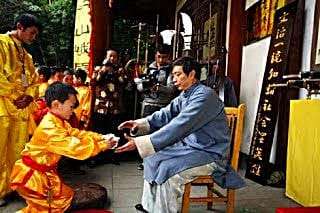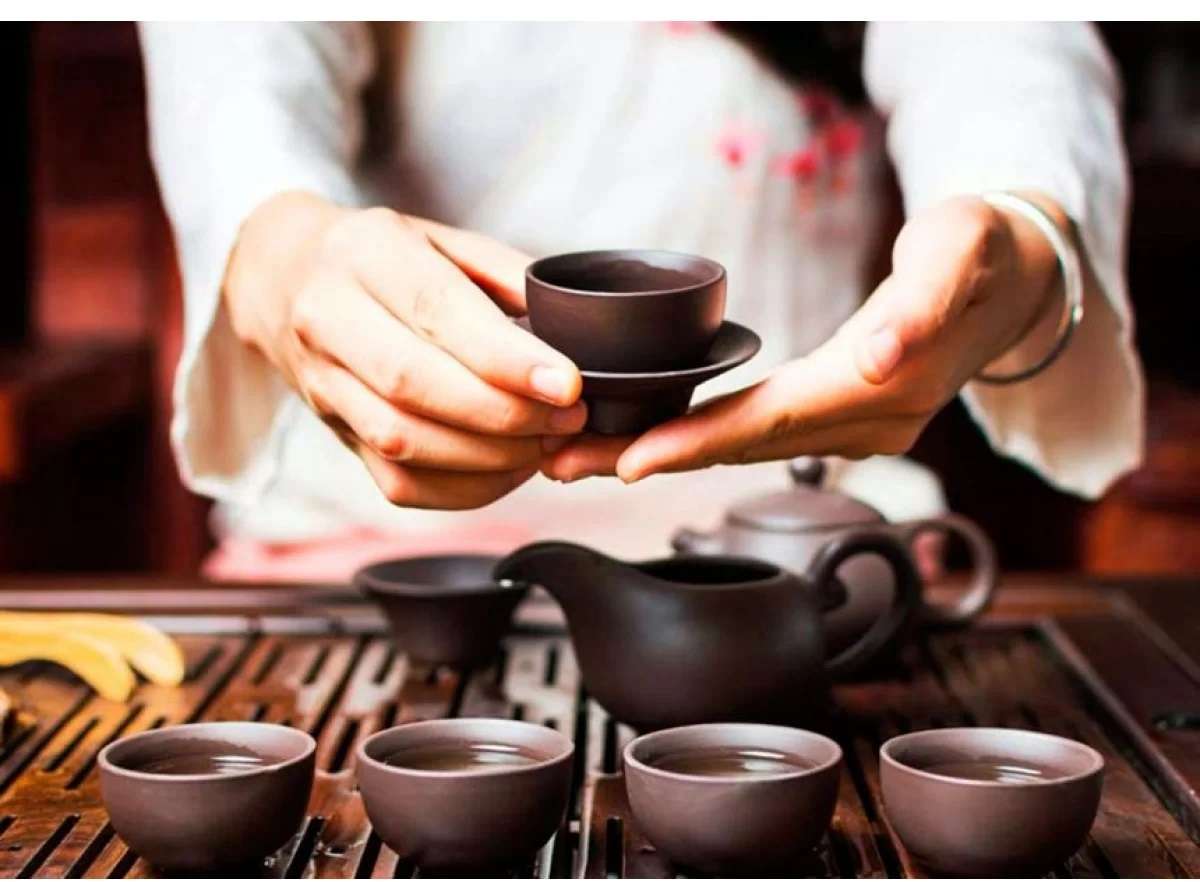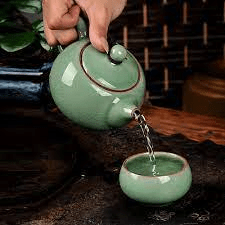In the land where tea is not just a beverage but a way of life, China boasts a tea culture steeped in centuries-old traditions and rituals. Central to this cultural tapestry is the etiquette surrounding tea drinking—a practice that embodies tradition, respect, mindfulness, and social harmony.
Tea drinking in China is a ceremonial and cultural practice with a rich history, and it comes with its own set of etiquette that has been refined over centuries. As we delve into the nuances of Chinese tea etiquette, we uncover a world where every gesture, from the pouring of tea to the handling of teaware, carries profound significance.
In China, tea is not merely a beverage but a cornerstone of cultural identity, embodying tradition, respect, and harmony. Central to this cultural tapestry are the intricate etiquettes that govern tea drinking—a practice refined over centuries. Whether in formal ceremonies or casual gatherings, observing these etiquettes is not just a sign of politeness but a gesture of reverence for the rich history and values that tea represents. Let’s delve into the essential tea etiquettes that guide the art of tea drinking in China.
Significance of Tea in Chinese Culture
Tea holds a special place in Chinese culture, symbolizing hospitality, respect, and tranquillity. With a history spanning thousands of years, tea has been integral to social interactions, philosophical discussions, and spiritual practices. From the serene tea gardens of Hangzhou to the bustling teahouses of Chengdu, tea permeates every aspect of Chinese life, serving as a bridge between past and present, tradition and modernity.
Here are some Traditional Chinese Tea Serving Etiquettes
Whether in formal ceremonies or casual gatherings, observing these etiquettes in Chinese tea culture is a sign of politeness and a gesture of reverence for the rich history and values that tea represents. Let’s delve into the essential tea etiquettes that guide the art of tea drinking in China.
Respect For Elders
In Chinese tea culture, respect for elders is paramount. When serving tea, it’s customary to offer tea to the elders or guests of honor first. This act not only demonstrates filial piety but also honors age and experience—a fundamental principle deeply ingrained in Chinese societal norms.


Tea Serving Etiquettes
Gestures of respect and sincerity accompany the act of offering and receiving tea. Always use both hands when offering a cup of tea, especially when serving guests or elders. This shows both respect and sincerity. Similarly, accepting tea with both hands is considered polite and shows appreciation for the gesture.
Thanking for Tea via Finger Tapping or Finger Kowtow
In Chinese tea culture, expressing gratitude is often done without words. A common way to thank someone for serving tea is by Finger Kowtow i.e. tapping the table next to your cup with two fingers. This silent gesture, rooted in imperial legend, is widely practised as a humble yet sincere thank you to the host.

This custom is said to have originated in the Qing dynasty when the Qianlong Emperor travelled in disguise throughout the empire and his accompanying servants were instructed not to reveal their master’s identity. One day in a restaurant in southern China, the emperor poured tea for a servant. To that servant, it was a huge honor to have the emperor pour him a cup of tea. Out of habit, he wanted to kneel and bow to express his thanks to the emperor, however, he could not do this since that would reveal the emperor’s identity. Instead, he tapped the table with bent fingers to represent kneeling to the Emperor and to express his gratitude and respect. In formal tea ceremonies nodding the head or saying “thank you” is more appropriate.

Observe and Appreciate
Appreciating the colour, aroma, and quality of the tea is an integral part of the tea-drinking experience in China. It’s polite to comment positively on the tea being served, acknowledging the effort put into its selection and preparation. This not only shows appreciation for the tea but also fosters a deeper connection with the host.
Refilling Water and Passing the Teapot
Ensuring that the teapot is never left empty is a mark of politeness in Chinese tea etiquette. Offering to refill it with hot water when it’s low shows attentiveness and consideration. When passing the teapot, make sure the spout is not pointing at anyone, as it’s considered rude.

Handling Your Cup
The proper way to hold a teacup in Chinese tea culture is with your fingers on the side and your thumb on the bottom, never covering the top of the cup. This allows the aroma of the tea to reach you and shows respect for the tea and its preparation.
Small Portions
Pouring small amounts of tea into cups encourages communal interaction and ensures that the tea remains hot and fresh. It also allows for multiple servings, prolonging the enjoyment of the tea-drinking experience.
Observance of Order
In group settings, it’s important to observe the order in which tea is served and follow the host’s lead. There is often a specific sequence intended to honor the guests and create a harmonious atmosphere.
Invitation to Tea
Inviting someone for tea is more than just a social gesture—it’s a symbol of friendship and respect in Chinese culture. Accepting such an invitation acknowledges the relationship and fosters deeper connections.
Few Don'ts in Chinese Tea Etiquette
Do not slurp the tea
Unlike some cultures where slurping is a sign of enjoyment, in a formal Chinese Tea ceremony, it’s more appropriate to sip tea quietly, savouring the taste and aroma. This demonstrates respect for the tea and the environment in which it’s being enjoyed.
Do not spit the tea out of your mouth
It is considered that the biggest impoliteness of the guest is to spit the tea out of mouth, especially, in front of the tea server.
Do not smoke while drinking tea
Smoking cigarettes during the tea drinking is disrespectful.
Conclusion
In China, the art of drinking tea is more than a simple act—it’s a reflection of tradition, respect, fostering relationships, and enjoying the moment. By observing these essential etiquettes, we not only honor the legacy of generations past but also cultivate deeper connections with each other and the world around us. While not all of these practices might be observed in casual settings, they are highly valued in formal gatherings and traditional tea ceremonies.
So, the next time you find yourself sharing a cup of tea with friends or strangers, let these etiquettes guide you on a journey of respect, and appreciation—an ancient tradition that continues to enrich lives to this day.







